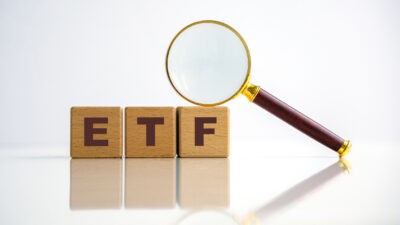Could BetaShares Australia 200 ETF (ASX: A200) be the best ASX exchange-traded fund (ETF) to invest in?
What is BetaShares?
BetaShares is one of the biggest ETF providers in Australia. It offers a variety of funds that are focused on different things like industry sectors, geographic regions or a specific index like the BetaShares Australia 200 ETF is.
What index does BetaShares Australia 200 ETF track?
ETFs that aim to follow an index will try to provide a return that is very similar to the index. The ETF I'm covering in this article tracks the ASX 200. That represents 200 of the biggest businesses on the ASX.
The ASX 200 has the largest amount of money allocated to the largest shares like Commonwealth Bank of Australia (ASX: CBA) and a very small amount allocated to the smallest shares in the ASX 200 like Wastern Areas Ltd (ASX: WSA) and Tassal Group Limited (ASX: TGR).
What are the biggest holdings of the ETF?
An ETF's performance will be dictated by how its underlying holdings perform. If its largest holdings do badly then the ETF itself will inevitably produce disappointing returns.
As at 11 August 2020, BetaShares Australia 200 ETF had 7.9% allocated to CBA, 7.7% allocated to CSL Limited (ASX: CSL), 7.1% allocated to BHP Group Ltd (ASX: BHP), 3.9% allocated to Westpac Banking Corp (ASX: WBC), 3.4% to National Australia Bank Ltd (ASX: NAB), 3.2% to Wesfarmers Ltd (ASX: WES), 3.1% to Australia and New Zealand Banking Group (ASX: ANZ), 3% to Woolworths Group Ltd (ASX: WOW), 2.6% to Macquarie Group Ltd (ASX: MQG) and 2.4% to Telstra Corporation Ltd (ASX: TLS).
These are many of Australia's most recognisable businesses which are leaders in their respective industries.
Sector diversification
The ASX has a high allocation to financials and materials. At the end of June 2020, 27.7% of the portfolio was invested in financial businesses and another 19.6% was invested in materials.
It's not surprising those two sectors are so large in the BetaShares Australia 200 ETF's holdings considering Australia's large housing market and the huge commodity export industry.
However, the problem is that these two industries don't have a lot of growth potential. I think it would be unwise to think commodity businesses can just keep generating more and more profit. Banks may also find it difficult to generate solid growth over the long-term.
It would be nicer if there was a higher allocation to tech shares, but that's just how the ASX 200 is currently structured.
Is it the best ASX ETF?
In many ways it's similar to Vanguard Australian Shares Index ETF (ASX: VAS), the same kind of weightings to the ASX blue chips and industries.
There is a slight difference in annual management fees between the two ETFs. The Vanguard ETF fee is 0.10% per annum but the BetaShares Australia 200 ETF has an annual management fee of just 0.07%. Every little helps, but both fees are so small that they're both really good passive options.
The choice between the two comes down to whether you prefer the ASX 200 or ASX 300, and whether you want to go with Vanguard and BetaShares as the provider.
I'd be happy to invest in BetaShares Australia 200 ETF but there are a couple of other ETFs I'd prefer more. One is BetaShares Australian Ex-20 Portfolio Diversifier ETF (ASX: EX20), which excludes the biggest 20 businesses and the allocation to the other 180 shares offers more growth.
The other ETF I'd be more interested in buying is BetaShares S&P/ASX Australian Technology ETF (ASX: ATEC) which is invested in ASX tech shares like Afterpay Ltd (ASX: APT), Xero Limited (ASX: XRO), SEEK Limited (ASX: SEK) and Appen Ltd (ASX: APX). Technology shares have strong growth prospects with great gross profit margins compared to typical ASX shares.









